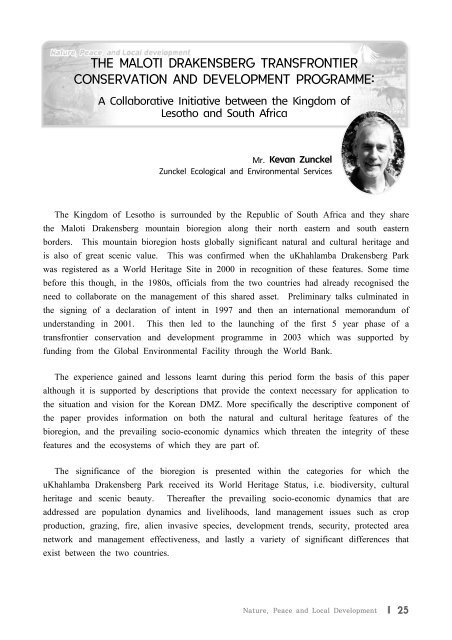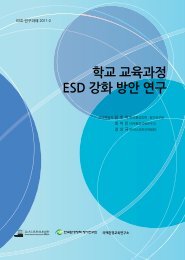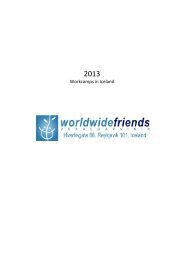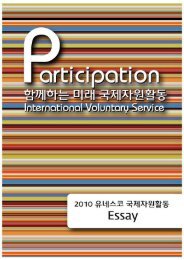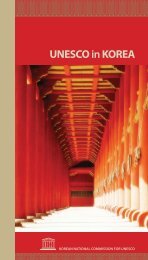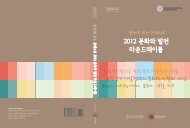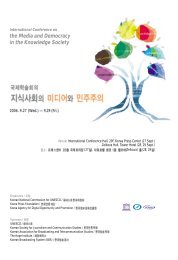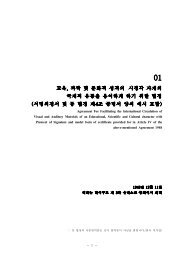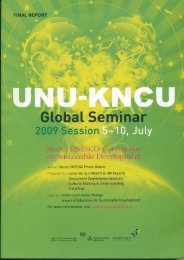DMZ ì¼ì ìí ííì ê´ë¦¬ë¥¼ ìí êµì 컨í¼ë°ì¤ - ì ë¤ì¤ì½íêµììí
DMZ ì¼ì ìí ííì ê´ë¦¬ë¥¼ ìí êµì 컨í¼ë°ì¤ - ì ë¤ì¤ì½íêµììí
DMZ ì¼ì ìí ííì ê´ë¦¬ë¥¼ ìí êµì 컨í¼ë°ì¤ - ì ë¤ì¤ì½íêµììí
Create successful ePaper yourself
Turn your PDF publications into a flip-book with our unique Google optimized e-Paper software.
THE MALOTI DRAKENSBERG TRANSFRONTIER<br />
CONSERVATION AND DEVELOPMENT PROGRAMME:<br />
A Collaborative Initiative between the Kingdom of<br />
Lesotho and South Africa<br />
Mr. Kevan Zunckel<br />
Zunckel Ecological and Environmental Services<br />
The Kingdom of Lesotho is surrounded by the Republic of South Africa and they share<br />
the Maloti Drakensberg mountain bioregion along their north eastern and south eastern<br />
borders. This mountain bioregion hosts globally significant natural and cultural heritage and<br />
is also of great scenic value. This was confirmed when the uKhahlamba Drakensberg Park<br />
was registered as a World Heritage Site in 2000 in recognition of these features. Some time<br />
before this though, in the 1980s, officials from the two countries had already recognised the<br />
need to collaborate on the management of this shared asset. Preliminary talks culminated in<br />
the signing of a declaration of intent in 1997 and then an international memorandum of<br />
understanding in 2001. This then led to the launching of the first 5 year phase of a<br />
transfrontier conservation and development programme in 2003 which was supported by<br />
funding from the Global Environmental Facility through the World Bank.<br />
The experience gained and lessons learnt during this period form the basis of this paper<br />
although it is supported by descriptions that provide the context necessary for application to<br />
the situation and vision for the Korean <strong>DMZ</strong>. More specifically the descriptive component of<br />
the paper provides information on both the natural and cultural heritage features of the<br />
bioregion, and the prevailing socio-economic dynamics which threaten the integrity of these<br />
features and the ecosystems of which they are part of.<br />
The significance of the bioregion is presented within the categories for which the<br />
uKhahlamba Drakensberg Park received its World Heritage Status, i.e. biodiversity, cultural<br />
heritage and scenic beauty. Thereafter the prevailing socio-economic dynamics that are<br />
addressed are population dynamics and livelihoods, land management issues such as crop<br />
production, grazing, fire, alien invasive species, development trends, security, protected area<br />
network and management effectiveness, and lastly a variety of significant differences that<br />
exist between the two countries.<br />
Nature, Peace and Local Development ❙ 25


